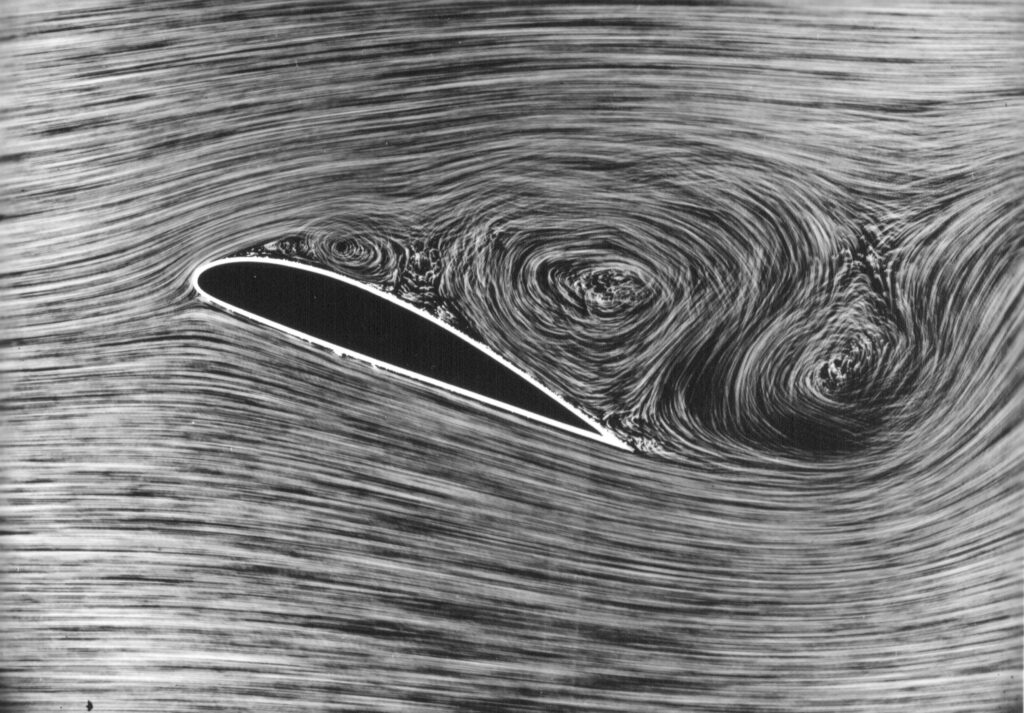This image shows the separation of an airfoil boundary layer. It is attributed to Ludwig Prandtl’s boundary layer flow visualizations in the early 1900s. In his 1931 textbook, Bewegung reibender Flüssigkeiten und technische Anwendungen, Prandtl describes his method of flowing water around airfoils and other geometries of interest, such as plates or cylinders. This photo was taken by mounting an airfoil vertically in a water tank so that it slightly protruded from the water’s surface. Aluminum particles were then sprinkled on the water’s surface, and long-exposure photos were taken to show pathlines. Black velvet was placed underneath the water tank to make the bright aluminum particles stand out as much as possible.
This flow visualization clearly shows the flow of interest, namely, the large separated flow region. Artistically, the vortices are striking, and the randomness of the aluminum particles combined with the long exposure effectively illuminates the entire flow. The result is a memorable image that illustrates the concept of separation.
This image is contrasted with the one below, showing a fully attached flow.
Attribution
This particular image was taken from the Wikimedia Commons. It is a horizontally mirrored and slightly cropped version of the original.
The original comes from the DLR (Deutsches Zentrum für Luft—und Raumfahrt). Their website was updated a few years ago, and this image was taken down. However, it can still be viewed via a web archive, albeit at a significantly lower quality.

4 Comments. Leave new
Second Prize: I love aerodynamics and airflow off surfaces. I give this second prize because I love how this flow resembles the Starry Night painting.
First Prize: These images provide a critical insight into the behavior of boundary layers—both turbulent and laminar—by visually depicting phenomena such as separation and reattachment. What is particularly fascinating is how these images bridge the gap between scientific understanding and aesthetic appreciation. The clarity and detail in showing the boundary layer’s dynamics not only serve an educational purpose but also highlight the intrinsic beauty of fluid dynamics.
First Prize: This is a first-place picture to me because it shows a phenomenon that many people don’t truly understand. The shape pictured is the same shape as airplane wings and being able to see points of pressure on the wing allows us to understand how flight works.
Second Prize: I would vote this as my second because I think it breaks the 4th wall of what we are able to physically see. Seeing the airflow’s patterns are really cool!